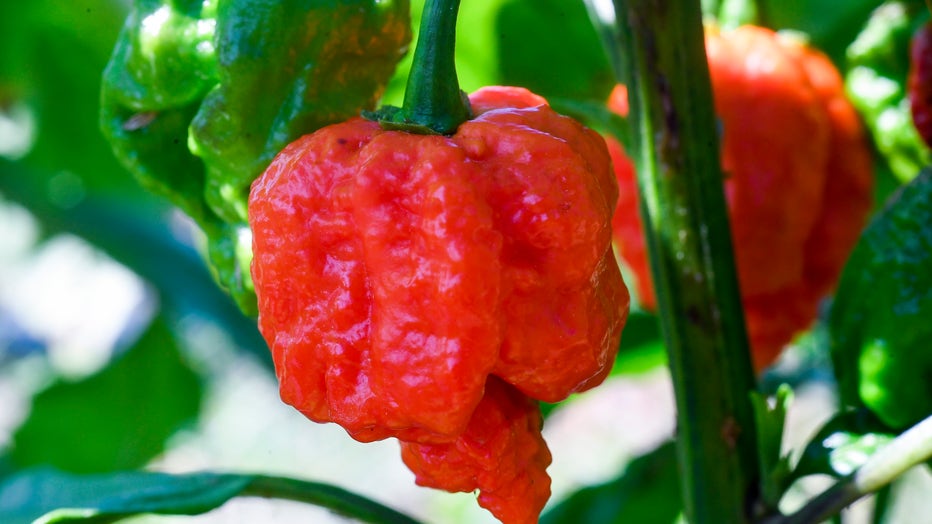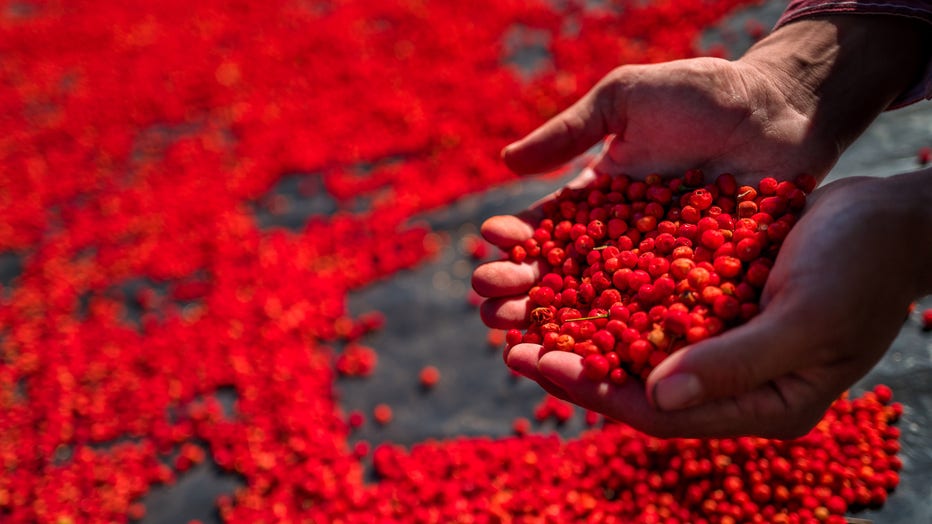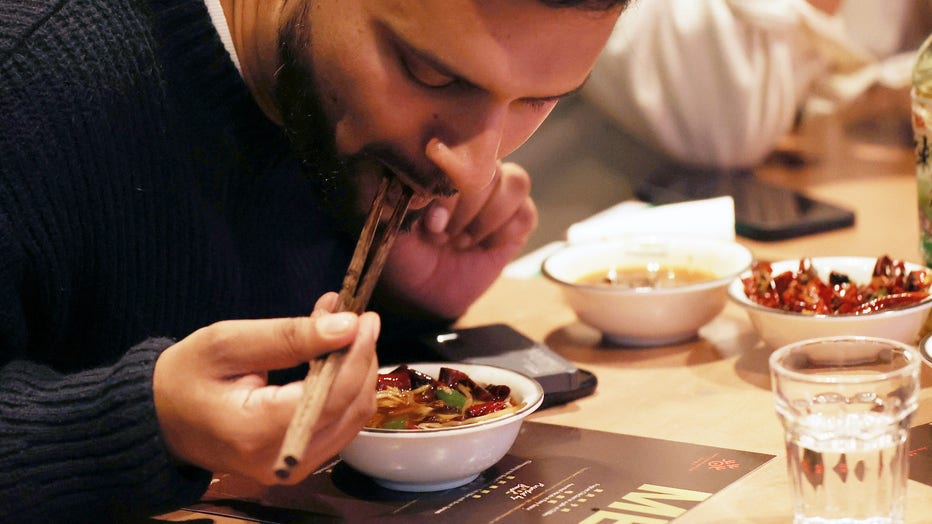One Chip Challenge: What to know about the social media trend that a family says killed their teenage boy
PHOENIX - There has been renewed discussion on social media and safety following the death of a Massachusetts teenager who took part in the viral "One Chip Challenge."
While a cause of death has not been reported for the teen, identified in various news reports as 14-year-old Harris Wolobah, the teen's family members believe he died as a result of the challenge, which involves eating an extremely spicy chip.
Here's what you should know about the challenge.
What is the ‘One Chip Challenge’?
According to the website of the non-profit group National Capital Poison Center, the One Chip Challenge is promoted by a tortilla chip company called Paqui, and the challenge involves eating a single spicy tortilla chip, and then waiting for as long as possible before eating or drinking anything else.
"The Paqui website challenges people to wait as long as possible after chip consumption, characterizing those who can last a full hour without eating or drinking as "invincible" (people who eat or drink a minute after eating the chip are dismissed as being "powerless"). Participants in this challenge are also encouraged to post their reactions on social media," read a portion of NCPC's website.
According to a report by our sister station WAGA-TV in Atlanta, Ga., the One Chip Challenge began as a marketing campaign by Paqui in 2016.
On Sept. 7, the Associated Press reported that Paqui has pulled the product in the aftermath of Wolobah's death. On Paqui's website, it is stated that the move was done out of an abundance of caution, and that the product "continues to adhere to food safety standards."
We should reiterate that as of Sept. 7, a cause of death has not been determined for Wolobah.
What is the chip made from?
According to Paqui's website, the 2023's version of the chip contains Carolina Reaper pepper and Naga Viper pepper, among other main ingredients and seasoning.
NCPC's website states the chip featured different peppers in years past.
What are the two peppers used?

Carolina Reaper chile peppers growing in the field. (Photo by Ben Hasty/MediaNews Group/Reading Eagle via Getty Images)
On the website PepperHead, Carolina Reaper is described as one of the world's hottest peppers, with a measurement of 1.641 million Scoville Heat Units. The pepper, according to the website, is a cross a Ghost Pepper and a Red Habanero, and was bred in South Carolina.
The Naga Viper pepper, according to PepperHead, was once the world's hottest pepper, but four other peppers have since overtaken the Naga Viper, in terms of heat. This pepper is a cross of three peppers: Naga Morich, Ghost Pepper, and a Trinidad Scorpion pepper. The pepper has an SHU of 1.349 million.
What is the Scoville Heat Unit?

A farmer checks the drying stage of chiltepin peppers during the sun-drying process on a farm in Mexico. The Chiltepin is a very traditional and well known tiny, berry-like chili pepper that is red to orange-red in color and grows wild throughout Nor
On their website, officials with the National Institute of Standards and technology (NIST), an official organization with the U.S. Government, describes the Scoville Heat Unit as an expression of the amount of heat in a pepper, with the number representing the number of times the concentration of capsaicinoids (a chemical compound that gives the peppers its heat) needs to be diluted before it is no longer detectable.
The website states that the Scoville Scale starts at 0, all the way up to Dragon's Breath and Pepper X, which has an SHU of 2.5 million and 3.18 million, respectively. The SHU dates back to 1912, and at least initially, it is calculated by diluting capsaicinoids in a sugar-water solution until the heat can no longer be detected by a panel of professionally-trained taste testers.
Nowadays, according to an article on MasterClass, scientists use a technique called High-Performance Liquid Chromatography to get a more accurate SHU result.
For comparisons, peppers that people normally encounter in everyday life have the following SHUs, according to NIST's website:
- Bell: 0
- Poblano: 1,000 to 1,500
- Jalapeño: 2,500 to 8,000
- Thai: 50,000 to 100,000
- Habanero: 100,000 to 350,000
So, the chip featured in the One Chip Challenge is very spicy, right?

(Photo by Sarah Dussault/MediaNews Group/The Mercury News via Getty Images)
On Paqui's website, company officials state there is no official Scoville rating for the chip itself, but did state that the two peppers used in the chip have a high SHU.
A list of warnings on the website featured a number of tips for those who want to attempt the challenge. They include:
- Keeping the chip out of children's reach
- Avoiding the chip for those who are pregnant or have any medical conditions
- Avoiding the chip for those who are sensitive to spicy foods, allergic to peppers, nightshades, or capsaicin
- For those who touched the chip, avoid touching their eyes or other sensitive areas before they wash their hands with soap
- Seek medical assistance if those taking part in the challenge experience difficulty breathing, fainting, or extended nausea.
Have there been instances where the One Chip Challenge took a wrong turn?
In September 2022, a report from Albuquerque, N.M. television station KRQE states that 20 to 30 students in a New Mexico town located to the east of the New Mexico-Texas State Line suffered upset stomachs and irritated eyes when they took part in the challenge. Some of the students were affected just by touching the chip.
In November of that same year, a report by our sister station WAGA-TV states that police in one Georgia town have issued a warning about the challenge after a high school student was hurt as a result of accepting the challenge.
How does spicy food affect a person?

A man tastes boiled spicy fish fillet, a Szechuan dish known for being spicy, during a 2023 food event in London (Photo by Li Ying/Xinhua via Getty Images)
According to NCPC's website, people who eat capsaicin-containing products, including the chip featured in the One Chip Challenge, "often experience mouth irritation, pain, or burning, along with intestinal discomfort."
"Capsaicin consumption can also cause more serious health problems, including chest pain, heart palpitations, and even heart attacks. Consumption of larger amounts of capsaicin can also cause repeated vomiting that can lead to life-threatening esophageal damage," read a portion of the website.
I did the One Chip Challenge, and now I'm not feeling well. What should I do?
NCPC's website states anyone experiencing "worrisome symptoms" after taking part in the One Chip Challenge should get guidance from Poison Control immediately.
(This website does not provide medical advice. The information provided above are meant to be informative, and nothing on this site should be considered as a substitute for professional medical advice, diagnosis or treatment. If you have concerns about your health, reach out to your primary care doctor or other health care providers.)

